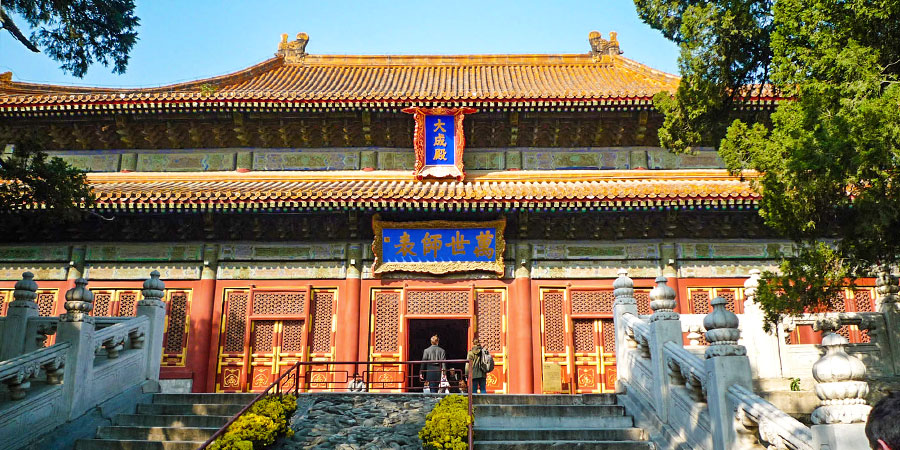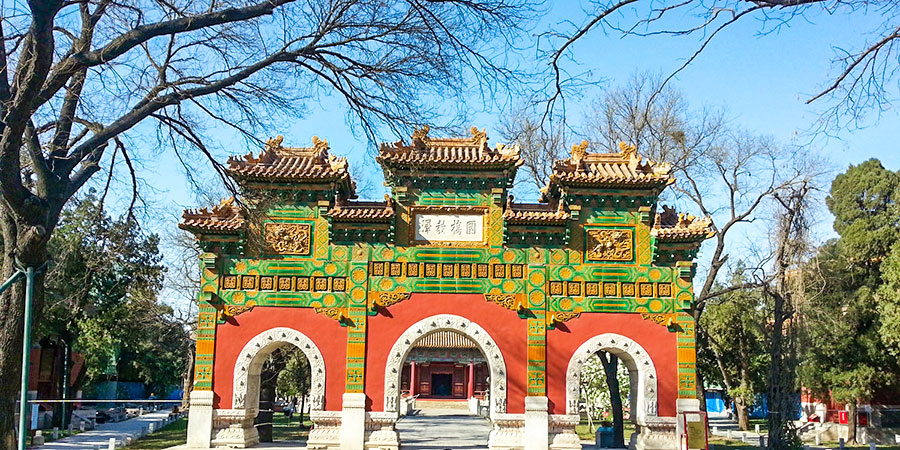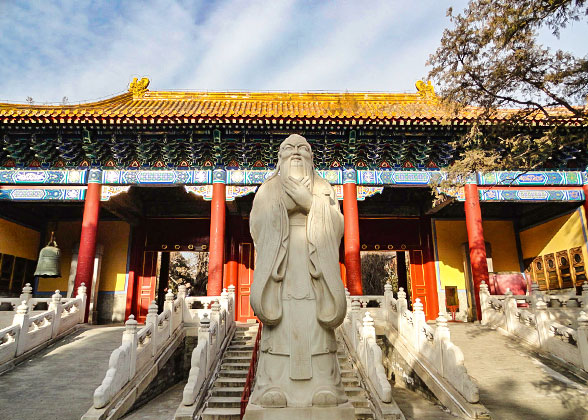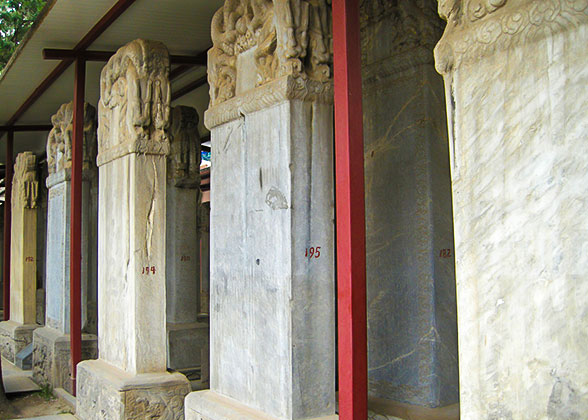Temple of Confucius in Beijing
Located on Guozijian Street inside Anding Gate, the Temple of Confucius in Beijing is the place where people paid homage to Confucius during the Yuan Dynasty (1271-1368), Ming Dynasty (1368-1644) and Qing Dynasty (1644-1911). Its neighbor in the west is Beijing Guozijian (Imperial Academy), which was the institute of the highest education well preserved in China.
The Temple of Confucius in Beijing was initially built in 1302 and additions were made during the Ming and Qing dynasties. It has a total area of 5.4 acres (22,000 square meters). It is the second largest temple constructed for Confucius, the greatest thinker and educationalist in ancient China, ranking only behind the Temple of Confucius in Qufu, Shandong Province.
This temple consists of four courtyards. The main structures include Xianshi Gate (Gate of the First Teacher), Dacheng Gate (Gate of Great Accomplishment), Dacheng Hall (Hall of Great Accomplishment) and Chongshengci (Worship Hall). Dacheng Hall is the main building in the temple, where the memorial ceremony for the sage was often held. Inside the temple one can see that 198 stone tablets are positioned on either side of the front courtyard, containing 51,624 names of Jinshi (the advanced scholars) of the Yuan, Ming and Qing dynasties. Also 14 stone stele pavilions of the Ming and Qing dynasties hold the precious historical information of ancient China.
One item of note is the 700-year-old Chujian Bai (Touch Evil Cypress) in the temple. Its name is associated with an ancient legend. During the Ming Dynasty, one day the superior official-Yan Song came to worship the sage on behalf of the emperor. When he was passing by the cypress, one of the branches of the tree took his hat off. Since Yan Song was a treacherous official, people thought the old tree could distinguish between good and evil people. Hence its name.
In the temple, you can also find remarkable pictures like two flying dragons playing a pearl among clouds, which are believed to be used only in the imperial palaces because dragon stands for emperor in ancient China. From those, it is easy to imagine the importance of this temple in the feudal society of China.
 By Bus:
By Bus:
Take bus 13 or 84 and get off at Guozijian Station, then walk north for about 50 meters (55 yards) and turn left, walk for 250 meters (273 yards) to the south gate.
 By Subway:
By Subway:
Take Subway Line 2 or Line 5 and get off at Yonghegong Station. Get out from Exit G. Walk south along Yonghegong Street for about four minutes. Then walk west along Guozijian Street and you can see the entrance of this temple.
Beijing Bus / Subway Search
The Temple of Confucius in Beijing was initially built in 1302 and additions were made during the Ming and Qing dynasties. It has a total area of 5.4 acres (22,000 square meters). It is the second largest temple constructed for Confucius, the greatest thinker and educationalist in ancient China, ranking only behind the Temple of Confucius in Qufu, Shandong Province.
 |
| Dacheng Hall |
This temple consists of four courtyards. The main structures include Xianshi Gate (Gate of the First Teacher), Dacheng Gate (Gate of Great Accomplishment), Dacheng Hall (Hall of Great Accomplishment) and Chongshengci (Worship Hall). Dacheng Hall is the main building in the temple, where the memorial ceremony for the sage was often held. Inside the temple one can see that 198 stone tablets are positioned on either side of the front courtyard, containing 51,624 names of Jinshi (the advanced scholars) of the Yuan, Ming and Qing dynasties. Also 14 stone stele pavilions of the Ming and Qing dynasties hold the precious historical information of ancient China.
|
|
One item of note is the 700-year-old Chujian Bai (Touch Evil Cypress) in the temple. Its name is associated with an ancient legend. During the Ming Dynasty, one day the superior official-Yan Song came to worship the sage on behalf of the emperor. When he was passing by the cypress, one of the branches of the tree took his hat off. Since Yan Song was a treacherous official, people thought the old tree could distinguish between good and evil people. Hence its name.
In the temple, you can also find remarkable pictures like two flying dragons playing a pearl among clouds, which are believed to be used only in the imperial palaces because dragon stands for emperor in ancient China. From those, it is easy to imagine the importance of this temple in the feudal society of China.
 |
| Dacheng Hall |
How to get to Beijing Confucius Temple
Take bus 13 or 84 and get off at Guozijian Station, then walk north for about 50 meters (55 yards) and turn left, walk for 250 meters (273 yards) to the south gate.
Take Subway Line 2 or Line 5 and get off at Yonghegong Station. Get out from Exit G. Walk south along Yonghegong Street for about four minutes. Then walk west along Guozijian Street and you can see the entrance of this temple.
Beijing Bus / Subway Search
| Admission Fee | CNY 30 - combo ticket for the temple and Guozijian Free for children under 3.9 feet (1.2m). |
| Opening Hours | May to October: 08:30 to 18:00, tickets sale ends at 17:00 November to April: 08:30 to 17:00, ticket sale ends at 16:30 |
| Recommended Time for a Visit | One hour |
Yonghe Temple
Guijie Street
Nanjing Confucius Temple
Shanghai Confucius Temple
Pingyao Confucius Temple
- Last updated on Sep. 05, 2024 by Gabby Li -


